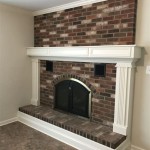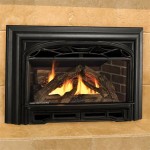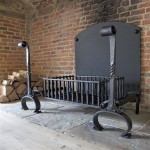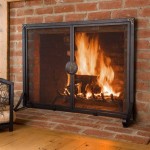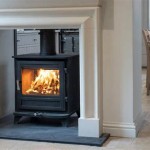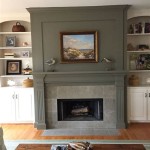How to Hide Wires When Hanging a TV Over a Brick Fireplace
Hanging a television above a brick fireplace often presents a desirable aesthetic, creating a focal point in a living space. However, the exposed wires that typically accompany such installations can detract significantly from the visual appeal. Successfully concealing these wires requires careful planning, appropriate tools, and adherence to safety guidelines. This article provides a comprehensive guide to concealing wires when mounting a television over a brick fireplace.
Assessing the Project and Gathering Materials
Before commencing the installation, a thorough assessment of the project is crucial. This involves examining the brick fireplace for structural integrity and identifying the location of electrical outlets and cable/satellite connections. Consideration should be given to the type of brick used, as this will impact the drilling process. Certain types of brick, particularly softer or older varieties, may be more prone to chipping or crumbling.
Once the assessment is complete, gather the necessary materials and tools. A partial list includes:
- Television mount (choose a mount rated for the size and weight of the television)
- Drill with masonry drill bits (various sizes)
- Wire concealment kit or in-wall rated wiring (if routing wires inside the wall cavity)
- Fish tape or wire snake
- Level
- Stud finder (to locate framing members, if applicable)
- Safety glasses and dust mask
- Measuring tape
- Pencil or marker
- Cable ties or Velcro straps
- Paintable caulk or sealant (to match brick color)
- Wire connectors (if splicing wires)
- Electrical tape
- Voltage tester
It’s paramount to prioritize safety when working with electricity. Always disconnect power to the relevant circuit before beginning any wiring work. Use a voltage tester to confirm that the power is off. Consult with a qualified electrician if unsure about any aspect of the electrical work.
Surface-Mounted Wire Concealment Options
One of the simplest methods for concealing wires is to use surface-mounted wire concealment channels. These channels are typically made of plastic or metal and are designed to adhere to the surface of the brick using adhesive or screws. They come in various sizes and colors, allowing for a relatively discreet solution that can be painted to match the brick.
To install surface-mounted channels, first measure the distance between the television and the power outlet or cable connection. Cut the channel to the appropriate length using a saw or utility knife. If using adhesive-backed channels, remove the backing and carefully apply the channel to the brick surface, ensuring it is straight and level. If using screw-mounted channels, pre-drill pilot holes in the brick and then secure the channel with screws. Run the wires through the channel, and then snap the cover into place. For a more seamless look, apply paintable caulk along the edges of the channel and paint it to match the brick.
While surface-mounted channels are a relatively easy and affordable solution, they may not be the most aesthetically pleasing option for all homeowners. The visible channels can still be noticeable, particularly if the brick has a varied texture or color.
In-Wall Wire Concealment: Considerations and Techniques
For a more aesthetically pleasing and less obtrusive solution, consider concealing the wires inside the wall cavity. This method involves creating pathways through the brick and drywall (if applicable) to run the wires from the television to the power outlet and cable connection. This method requires more skill and effort but results in a cleaner, more professional look.
Before attempting in-wall wire concealment, verify local building codes regarding low-voltage wiring. Some jurisdictions may require the use of specific types of in-wall rated cabling, such as CL2 or CL3 rated cables. Using non-rated cables within a wall cavity can pose a fire hazard and may violate building codes.
The first step is to determine the location of the existing electrical outlet and cable connection. If there are no outlets or connections in the desired location, consider hiring a qualified electrician to install them. It is not recommended to extend existing electrical circuits without proper knowledge and expertise.
Next, carefully plan the wire route. Use a stud finder to locate any framing members behind the drywall, if present. Avoid drilling into studs, as this can compromise the structural integrity of the wall. Mark the locations where the wires will enter and exit the wall. These locations should be as close as possible to the television and the power outlet/cable connection.
Using a drill with a masonry drill bit, carefully drill holes through the brick at the marked locations. Start with a smaller pilot hole and gradually increase the size of the bit until it is large enough to accommodate the wires and any necessary grommets or bushings. Use caution when drilling into brick, as excessive pressure can cause the brick to crack or crumble. A hammer drill can be used, but with extreme care to avoid damaging the brick.
After drilling the holes, use a fish tape or wire snake to pull the wires through the wall cavity. Attach the wires to the fish tape using electrical tape or cable ties. Carefully feed the fish tape through the holes, and then pull the wires through. Ensure that the wires are not tangled or kinked.
Once the wires are in place, install grommets or bushings in the holes to protect the wires from abrasion and to prevent dust and debris from entering the wall cavity. Connect the wires to the television and the power outlet/cable connection. Use wire connectors to splice wires if necessary. Ensure all connections are secure and properly insulated with electrical tape.
Finally, seal the holes around the wires with paintable caulk or sealant to match the brick color. This will help to prevent drafts and moisture from entering the wall cavity and will create a more seamless look.
Advanced Techniques and Considerations for Challenging Installations
Some brick fireplaces present unique challenges that require more advanced techniques. For example, some fireplaces may have thick layers of brick or stone, making it difficult to drill through. Others may have intricate designs or decorative features that make it difficult to conceal wires without damaging the aesthetics of the fireplace.
In these cases, consider consulting with a professional contractor or electrician who has experience with similar installations. They may be able to recommend alternative wire concealment methods or provide guidance on how to overcome specific challenges.
One advanced technique involves using a specialized tool called a wire concealer. This tool is designed to create a small channel in the surface of the brick or stone, allowing the wires to be recessed into the wall. The channel is then filled with a matching grout or sealant, making the wires virtually invisible.
Another technique involves using a recessed outlet box. This type of outlet box is designed to be installed flush with the surface of the wall, allowing the television to be mounted closer to the wall and further concealing the wires. Recessed outlet boxes require careful planning and installation to ensure that they are properly supported and that the wires are safely connected.
When working with older brick fireplaces, it is important to be extra cautious, as the brick may be more fragile and prone to damage. Avoid using excessive force when drilling or hammering, and consider using a specialized brick sealant to protect the brick from moisture and deterioration.
Proper cable management is also crucial for achieving a clean and organized look. Use cable ties or Velcro straps to bundle the wires together and to keep them out of sight. Avoid creating excessive slack in the wires, as this can make it more difficult to conceal them. Make sure to leave enough slack to safely disconnect and reconnect the TV later on if necessary.
Ultimately, successfully concealing wires when hanging a television over a brick fireplace requires careful planning, attention to detail, and adherence to safety guidelines. By carefully assessing the project, gathering the necessary materials, and choosing the appropriate wire concealment method, homeowners can achieve a clean and aesthetically pleasing installation that enhances the look and feel of their living space.

How To Mount A Tv Over Brick Fireplace And Hide The Wires Designing Vibes Interior Design Diy Lifestyle

How To Hide Tv Wires Above A Fireplace When You Can T Go Through The Wall Homes I Have Made

How To Hide Tv Wires Above A Fireplace When You Can T Go Through The Wall Homes I Have Made

How To Hide Tv Wires Above A Fireplace When You Can T Go Through The Wall Homes I Have Made

Tv Wall Mount Installation With Wire Concealment Over Fireplace

Tv Mounting Over A Brick Fireplace With Wires Concealed In Wire Molding S

How To Hide Cable Wires When Mounting Tv Over Fireplace Hometalk

Mounting A Tv On Brick Above Fireplace House Of Hepworths

How To Hide Tv Wires Above A Fireplace When You Can T Go Through The Wall Homes I Have Made

Learn How To Hide Tv Wires In A Wall Julie Blanner
Related Posts

